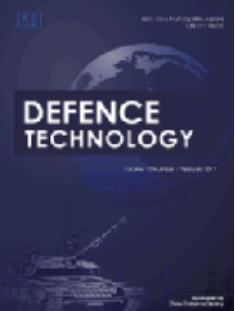A hierarchical simulation framework incorporating full-link physical response for short-range infrared detection
IF 5.9
Q1 ENGINEERING, MULTIDISCIPLINARY
引用次数: 0
Abstract
Missile-borne short-range infrared detection (SIRD) technology is commonly used in military ground target detection. In complex battlefield environments, achieving precise strike on ground target is a challenging task. However, real battlefield data is limited, and equivalent experiments are costly. Currently, there is a lack of comprehensive physical modeling and numerical simulation methods for SIRD. To this end, this study proposes a SIRD simulation framework incorporating full-link physical response, which is integrated through the radiative transfer layer, the sensor response layer, and the model-driven layer. In the radiative transfer layer, a coupled dynamic detection model is established to describe the external optical channel response of the SIRD system by combining the infrared radiation model and the geometric measurement model. In the sensor response layer, considering photoelectric conversion and signal processing, the internal signal response model of the SIRD system is established by a hybrid mode of parametric modeling and analog circuit analysis. In the model-driven layer, a co-simulation application based on a three-dimensional virtual environment is proposed to drive the full-link physical model, and a parallel ray tracing method is employed for real-time synchronous simulation. The proposed simulation framework can provide pixel-level signal output and is verified by the measured data. The evaluation results of the root mean square error (RMSE) and the Pearson correlation coefficient (PCC) show that the simulated data and the measured data achieve good consistency, and the evaluation results of the waveform eigenvalues indicate that the simulated signals exhibit low errors compared to the measured signals. The proposed simulation framework has the potential to acquire large sample datasets of SIRD under various complex battlefield environments and can provide an effective data source for SIRD application research.
结合全链路物理响应的近程红外探测分层仿真框架
弹载近程红外探测技术是军用地面目标探测中常用的一种技术。在复杂的战场环境中,实现对地面目标的精确打击是一项具有挑战性的任务。然而,真实的战场数据是有限的,等效的实验是昂贵的。目前,缺乏全面的SIRD物理建模和数值模拟方法。为此,本研究提出了一个包含全链路物理响应的SIRD仿真框架,该框架通过辐射传输层、传感器响应层和模型驱动层进行集成。在辐射传输层,将红外辐射模型与几何测量模型相结合,建立了描述SIRD系统外部光通道响应的耦合动态检测模型。在传感器响应层,考虑光电转换和信号处理,采用参数化建模和模拟电路分析相结合的方式,建立了SIRD系统内部信号响应模型。在模型驱动层,提出了基于三维虚拟环境的协同仿真应用驱动全链路物理模型,并采用平行光线追踪方法进行实时同步仿真。所提出的仿真框架能够提供像素级的信号输出,并得到了实测数据的验证。均方根误差(RMSE)和Pearson相关系数(PCC)的评估结果表明,模拟信号与实测数据具有较好的一致性,波形特征值的评估结果表明,模拟信号与实测信号相比误差较小。所提出的仿真框架具有获取各种复杂战场环境下SIRD大样本数据集的潜力,可以为SIRD应用研究提供有效的数据源。
本文章由计算机程序翻译,如有差异,请以英文原文为准。
求助全文
约1分钟内获得全文
求助全文
来源期刊

Defence Technology(防务技术)
Mechanical Engineering, Control and Systems Engineering, Industrial and Manufacturing Engineering
CiteScore
8.70
自引率
0.00%
发文量
728
审稿时长
25 days
期刊介绍:
Defence Technology, a peer reviewed journal, is published monthly and aims to become the best international academic exchange platform for the research related to defence technology. It publishes original research papers having direct bearing on defence, with a balanced coverage on analytical, experimental, numerical simulation and applied investigations. It covers various disciplines of science, technology and engineering.
 求助内容:
求助内容: 应助结果提醒方式:
应助结果提醒方式:


